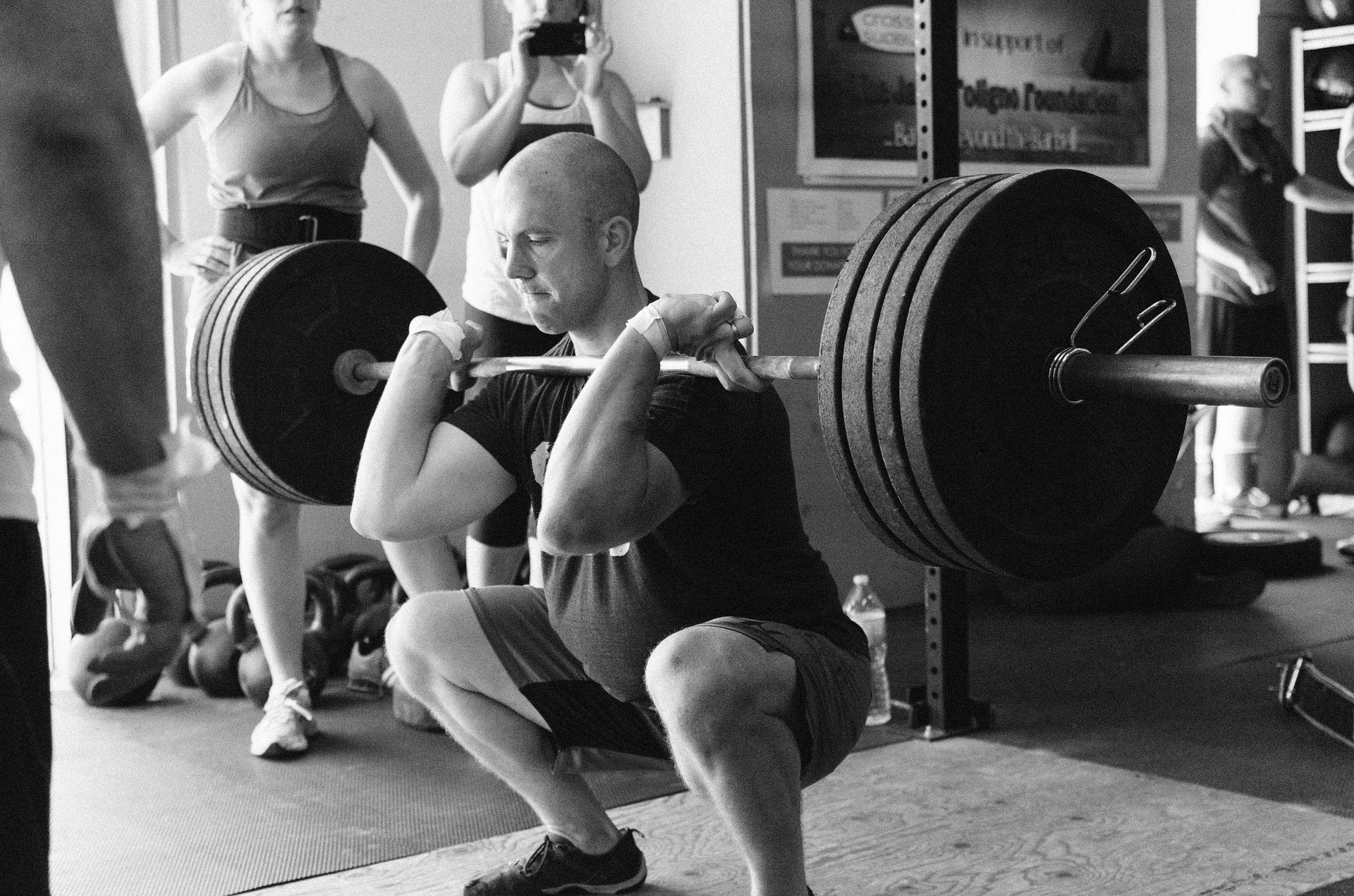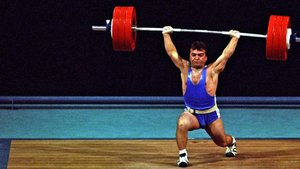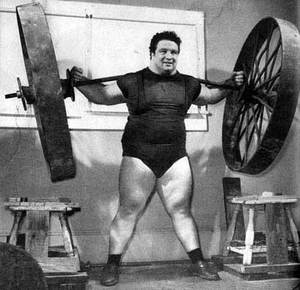
WHAT?
How many reps per set should I be doing for squats? Should I do the same for the deadlift? Is 8-12 reps for building muscle?
The word repetition is thrown around in the fitness industry and is usually prescribed after looking at a table or hearing from someone “more knowledgeable” in the gym touting that to build muscle you have to do 10 reps per set.
However, this article will show you the key thing to consider, and the component that is probably most undervalued with regards to effective programming for strength.
Exercise Complexity
The complexity of movement is arguably the most under-appreciated variable in exercise prescription and refers to a few different factors:
Phases of the lift
Are there 1, 2, 3, 4, 5 phases to be broken down? Now this is largely subjective depending upon how you are coached, but it is still clear even to the untrained eye, that there are more stages to the Snatch/clean and press than there is in the bench press. The more phases required, the more complex the movement is.

Speed/Timing
Constraints of the exercise itself, such as the catch phase in a clean requiring a minimum velocity. As well as other factors such as pausing in the bottom of a squat/bench press; speed and timing can significantly influence how complex the movement is.
Stability
Are you performing the exercise with one leg? Removing the stability may be a method that has been used and abused previously as discussed in “Is Balance Training Effective?” but there are still viable ways of decreasing the stability to enhance performance. An example would include a split squat in which one foot is placed in front of the other, placing greater overload on the lead leg.
*Note – loading does influence the complexity of an exercise, however there are so many variables to discuss that it will not be included in this article.
Despite what exercise guidelines may state on a general basis, when it comes to being in the gym for real, applying the same number of reps per set to a larger more technical movement (I.e. 8 reps on the back squat) compared to a leg press, may impair the development of strength in the long run.
WHY?
Wax On, Wax Off
Basically, every action performed whether writing your name or lifting a maximal deadlift, is what is called a “motor skill”. In the same way learning how to write your name when you were younger took time, patience and practice to improve technique, so too does executing an exercise correctly and efficiently.
Exercise isn’t always about feeling the burn. When looking to develop strength, training should be seen as attentive practice with the formation and refinement of a specific neurological pathway in mind. To put it simply, you need to focus on the important aspects of technique. You didn’t hop on a bike for the first time and starting riding straight away.
The Magic of Myelin
 Myelin is a fatty layer of insulation that wraps itself around a specific neurological pathway in the body, accelerating the rate at which signals can be transmitted (2). A great analogy I once heard was it’s the equivalent of converting a country back lane into an express/motorway. More traffic (neural signals) can drive at higher speeds to their destination (muscle tissue).
Myelin is a fatty layer of insulation that wraps itself around a specific neurological pathway in the body, accelerating the rate at which signals can be transmitted (2). A great analogy I once heard was it’s the equivalent of converting a country back lane into an express/motorway. More traffic (neural signals) can drive at higher speeds to their destination (muscle tissue).
However, the insulation is only placed around the specific pathway, if it is executed similarly/the same way every time.
When squatting, where are your feet? Are they in the same position every time? If not, you may be leaving long term progression and safety on the table.
Too many people unrack the bar and bend their knees several times hoping to get fitter and stronger, then wonder why they leave the gym with knee pain or hit a training plateau for months at a time. It has nothing to do with more reps and sets, changing loads etc.
No exercise program in the world will allow you to outlift/out-train poor movement patterns. You might get by initially, but eventually it will catch you up.
Joints and Muscles
Without overcomplicating the biomechanical aspect of human movement, it’s clear to most readers that performing an exercise will involve joints moving through varying ranges of motion throughout the course of a squat/deadlift etc.
When you start in the deadlift, ideally your hips shouldn’t shoot up in the air (i.e. Knees extending) straight away. However, the more repetitions you perform, the more likely this technical fault is going to happen.
When it does, you are no longer training the same motor pattern, but simply a fatigue induced variation of it. This is such a simple concept, that it can be visually “screened” to see how you cope with a certain rep number.
*Practical Tip = Video record an exercise – does the movement look the same in the last repetition to the first? If not, you may want to reduce the repetition number during each set. If it does, then well done, but there is still more to it than that.
Inter-Muscular Sequencing
Strength is the skilful expression of force against an object or throughout a movement. The key word there is: skill. This skill is determined by several factors, one of which is intermuscular coordination.

Inter-muscular coordination refers to the interaction between muscles, order at which they contract and the resultant movement that occurs (15).
This is one of the most essential aspects of strength and potentially more important than the force that can be produced by individual muscles, with research showing stronger quadriceps not necessarily directly resulting in a higher jump (1, 7) despite being a key muscle involved in jumping.
This also explains why a bigger muscle doesn’t always equal a stronger one. Most of the time, it’s how you use it!
When tired during exercise, intermuscular coordination is significantly hindered, with earlier research showing an increase in agonist-antagonist coactivation (8, 9). This is essentially where, in a bid to help the body in a state of stress and offset the reduced force production of a tired muscle, extra muscles (that should be semi-relaxed) activate to try and contribute to the movement.
And, to make matters worse, just because the exercise technique looks the same from rep 1 to 12, doesn’t necessarily mean the inter-muscular coordination is the same. Research by Cote et al. (4) found muscles to reorganise the pattern in which they fire, in order to try and compensate during a movement and match the same technique/speed of execution.
![]()
HOW?
Examples of Skillful Practice
Elite Olympic Weightlifters are very rarely seen performing sets of more than five repetitions for either the snatch or clean and jerk (16). This is due to their priority being to focus on efficiency and aiming to optimise the skilful execution of the exercise in question. Practice doesn’t make perfect. Perfect practice makes perfect. There’s a difference.
What About Volume?
That’s true, volume is important. So how do you achieve what is required for progress without incurring the fatigue that has acute effects on movement quality? Increase the number of sets or perform cluster sets.
Gain the volume, rep counting, muscle burning benefits and sensations from exercises that are lower in complexity and that you are not too interested in (e.g. a leg press).
Times This Doesn’t Apply
Is there ever a time to be pushing the number of reps per set in a movement?
Of course, there is. But as always, it’s simply a matter of context. There are two factors to consider when deciding whether to push for reps within a set and aim to incur fatigue –
1) Are you aiming to be stronger within this movement?
There are benefits to be taken from pushing your rep number up and training to fatigue* (note – this is fatigue and not failure).
Fatigue of a muscle has been shown to result in the recruitment of higher threshold motor units (3) and is often known as the repetition effort method. However, it’s not just about improving the one muscle, the goal is to improve an entire sequence of muscles throughout a movement.
Another benefit of training to fatigue, is that metabolic stress (the accumulation of metabolic by product such as lactic acid) has been shown to significantly contribute to hypertrophy (10, 11), not to mention that improved fatigue resistance can influence overall work capacity (I.e. How much exercise you can complete and recover from per session).
With training volume being a key factor in the development of strength (5, 6, 12, 13, 14), it is important that this variable is regularly worked on and that volume is a factor to be considered. It’s just simply a matter of which exercises you choose to challenge with fatigue.

2) What is your training status?
The priority for new trainees…or even for advanced individuals new to an exercise (i.e. the first time performing a deadlift), should be to gain a consistent, safe and efficient technique. Once the foundation is formed, you may look to push fatigue within this movement (even if you aren’t looking to get stronger within it). Be wary however, even for the trained lifter, performing a complex movement under fatigue can increase the injury risk to the point where the benefits simply aren’t worth the inherent risks associated with it.
Summary
- The complexity of a movement can be defined by a few different factors, such as the number of phases in the movement, the amount of muscles involved, the speed of execution etc.
- The more complex a movement is, the more likely fatigue is going to negatively influence your performance, not only from a viewpoint of injury risk but also regarding overall force output and technical execution.
- Fatigue has the potential to interfere with the myelination of a motor pattern, meaning efficiency and performance can be compromised both in the short and long term.
- In order to gain the benefits of training to fatigue, select “assistance exercises” or exercises that contribute to overall strength development, but ones that you aren’t necessarily interested in getting stronger in.
- Always prioritise developing a safe and efficient technique. Fatigue (particularly at the start) is the enemy and will aim to break your movement mechanics down, rep by gruelling rep.
Reference List
- Bobbert, M. F., & Van, A. S. (1994). Effects of muscle strengthening on vertical jump height: a simulation study. Medicine and science in sports and exercise, 26(8), 1012-1020
- Brewer, C. (2011). Physical and movement skill development. Coaching Children in Sport, 139-168
- Conwit, R. A., Stashuk, D., Suzuki, H., Lynch, N., Schrager, M., & Metter, E. J. (2000). Fatigue effects on motor unit activity during submaximal contractions. Archives of physical medicine and rehabilitation, 81(9), 1211-1216
- Côté, J. N., Feldman, A. G., Mathieu, P. A., & Levin, M. F. (2008). Effects of fatigue on intermuscular coordination during repetitive hammering. Motor control, 12(2), 79-92.
- Fleck, S. J. (1999). Periodized strength training: a critical review. The Journal of Strength & Conditioning Research, 13(1), 82-89.
- Kramer, J. B., Stone, M. H., O’bryant, H. S., Conley, M. S., Johnson, R. L., Nieman, D. C., … & Hoke, T. P. (1997). Effects of single vs. multiple sets of weight training: impact of volume, intensity, and variation. Journal of strength and Conditioning Research, 11, 143-147
- Morriss, C. J., Tolfrey, K., & Coppack, R. J. (2001). Effects of short-term isokinetic training on standing long-jump performance in untrained men. Journal of strength and conditioning research, 15(4), 498-502
- Potvin, J. R., & O’brien, P. R. (1998). Trunk Muscle Co‐contraction Increases During Fatiguing, Isometric, Lateral Bend Exertions: Possible Implications for Spine Stability. Spine, 23(7), 774-780
- Psek, J. A., & Cafarelli, E. (1993). Behavior of coactive muscles during fatigue. Journal of Applied Physiology, 74(1), 170-175.
- Schott, J., McCully, K., & Rutherford, O. M. (1995). The role of metabolites in strength training. European journal of applied physiology and occupational physiology, 71(4), 337-341
- Smith, R. C., & Rutherford, O. M. (1995). The role of metabolites in strength training. European journal of applied physiology and occupational physiology, 71(4), 332-336
- Stone, M. H., Johnson, R. L., & Carter, D. R. (1979). A short term comparison of two different methods of resistance training on leg strength and power. Athletic Train, 14, 158-161
- Stowers, T., McMillan, J., Scala, D., Davis, V., Wilson, D., & Stone, M. (1983). The Short-Term Effects of Three Different Strength-Power Training Methods. Strength & Conditioning Journal, 5(3), 24-27.
- Wernbom, M., Augustsson, J., & Thomeé, R. (2007). The influence of frequency, intensity, volume and mode of strength training on whole muscle cross-sectional area in humans. Sports medicine, 37(3), 225-264
- Young, W. B. (2006). Transfer of strength and power training to sports performance. International journal of sports physiology and performance, 1(2), 74-83
- Zatsiorsky, V. M., & Kraemer, W. J. (2006). Science and practice of strength training. Human Kinetics





